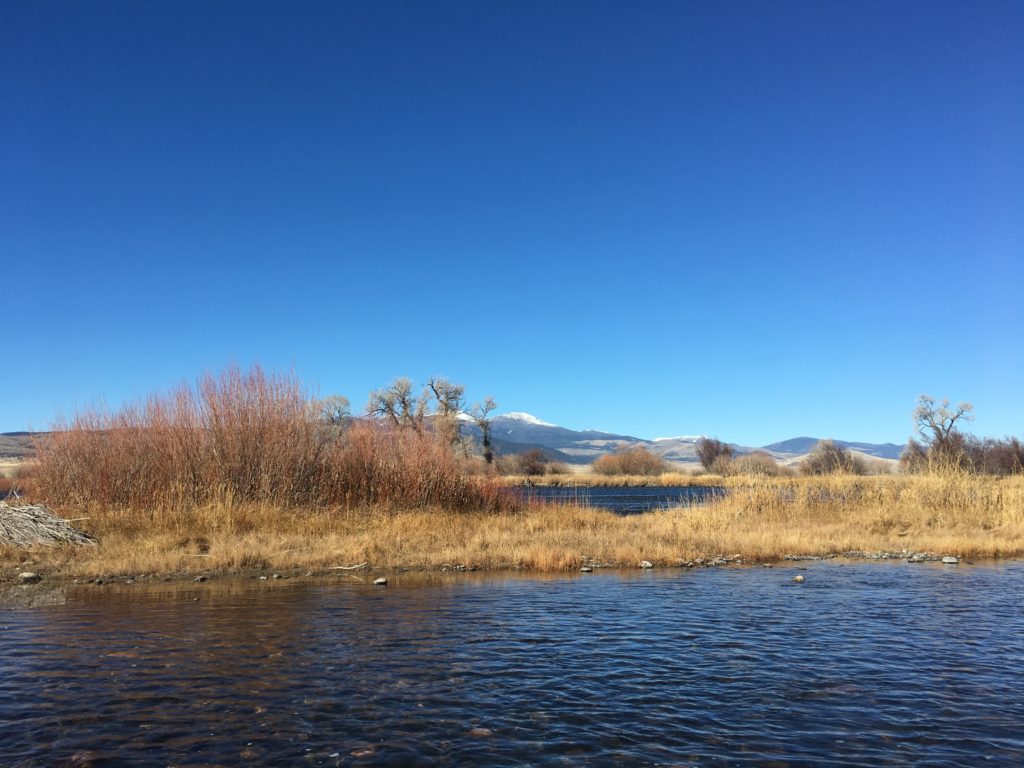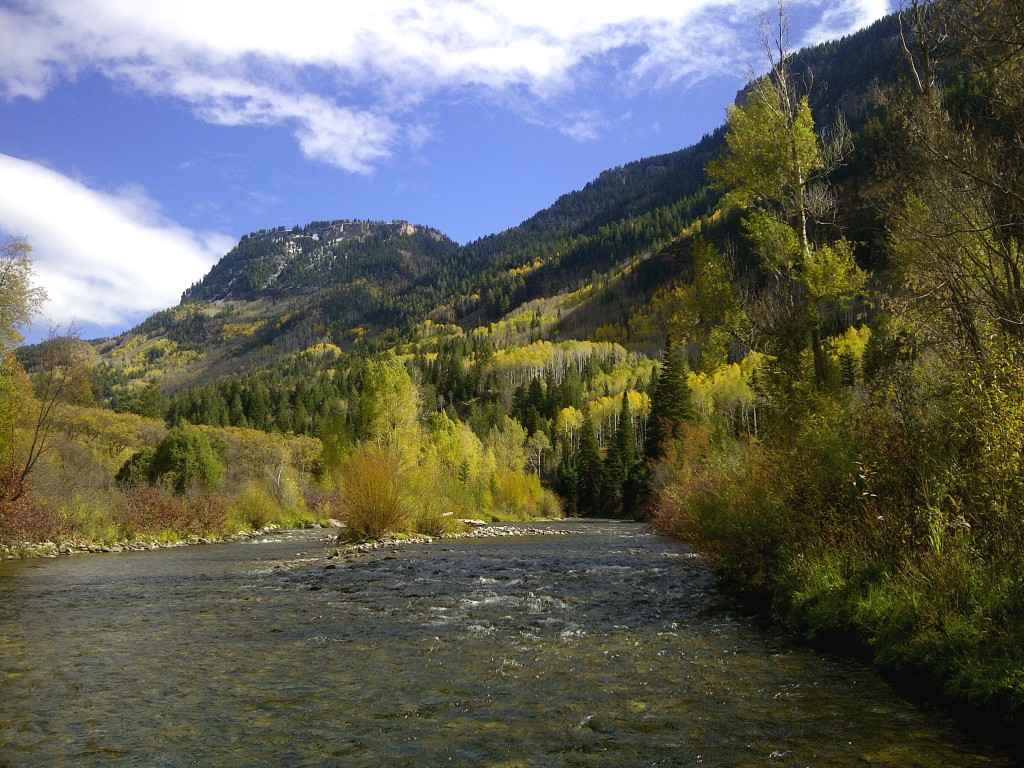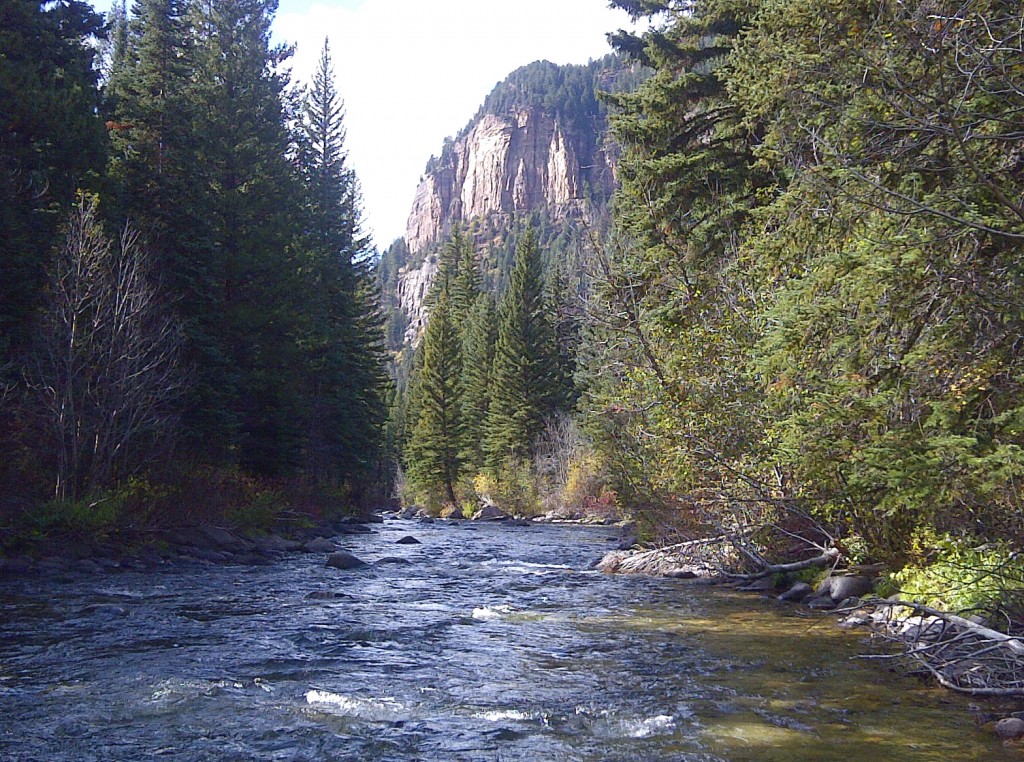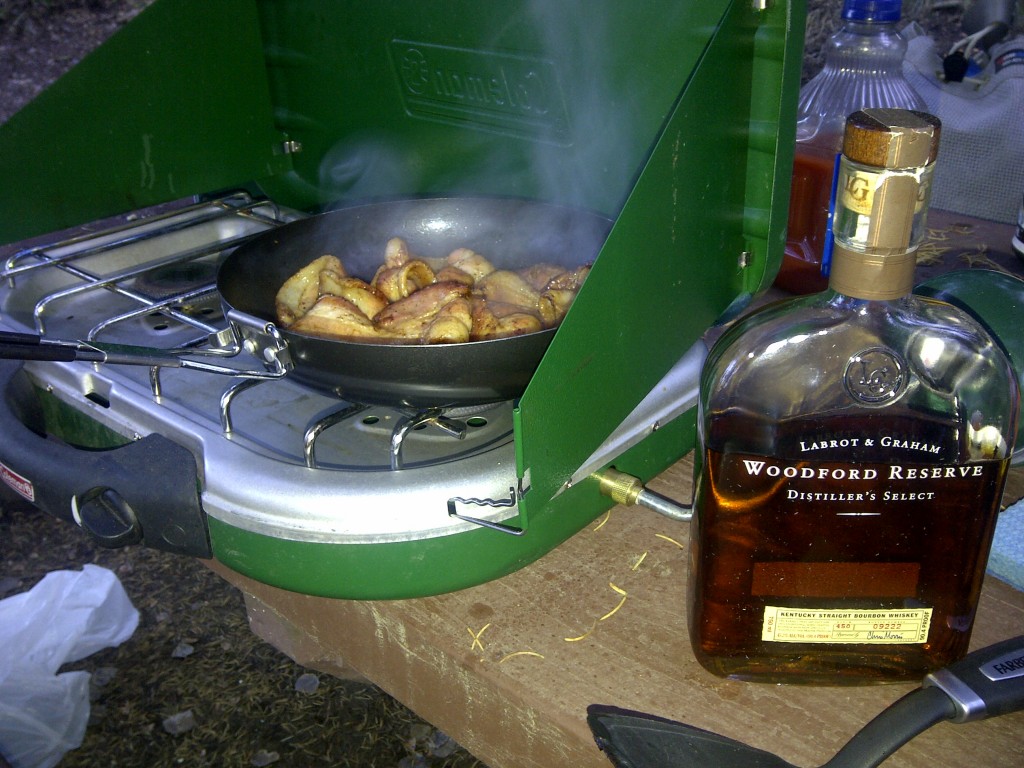There is a stretch of the Madison River in Montana below the town of Ennis that is only open to walk / wade anglers. A boat can be used to access the many braided channels, but any fishing must be done while standing on terra firma.

We parked at one of the several access points, then began to hike downstream until we hadn’t seen another angler for a while and judged we were clear of the eighty percent who seldom stray more than a quarter mile from their vehicle. I elected to enter the river at a place where a couple of small islands created deep side channels against the bank on their near side, with wider, shallower riffles on the far.
The day was blue and mild, stark contrast to the previous when we’d floated a portion of the river upstream of Ennis – leaden skies and a cold wind, squinting hard in the flat light to detect the subtle takes of fish that rose occasionally to the small dry flies we cast.
I stepped off the bank and into the flow, wading out to the tail of one of the islands where I stood in the shallows, deciding what flies to start out with. While the promise of a warm fall day was in the air, a trace of the previous night’s cold still lingered. If there was to be any dry fly action, it likely wouldn’t be until later in the afternoon. I selected a large indicator dry then two feet below it tied a weighted nymph to bounce along the bottom of the shallower riffles and hang suspended in the deeper runs.
Standing quietly in the water, the gentle push of the river against my boots, carried downstream with the flow any desire to hasten in to action. The snow capped Ruby Range defined the western horizon, while closer a few cottonwoods along the shore bank still clung stubbornly to the last of their foliage.
I took my time working up the first run, savoring several feelings: being grounded in the river, the flex and load of the rod, the arc of the line out and across the water, the settling of the flies as the current carried them back to me. The first riffle yielded two small browns followed by a larger rainbow. Hooked against a tangle of shore roots, it leaped and dove and broke me off before I had time to get in synch with its movements.
I retreated to shore and sat on the grassy bank, feet dangling over the edge just shy of the water, laid the rod in the grass next to me and began repairing my leader. At that moment, float fishing seemed like the angling version of speed dating – always on the move, a quick cast, a twitch and jiggle of the fly to see if there is a reaction, then on to the next encounter, and the next. There is constant communication and interplay, not to mention the physical presence, between oarsman and angler.
Wade fishing, on the other hand, seemed more akin to a gradual courtship, reminiscent of older times, when the pace of life was slower, our culture less hung up on the drug of instant gratification. More time was taken in ritual and observation. There is just the angler and the river, and sometimes, if enough attention is paid and time invested, there is a meeting of the minds.
I decided against tying on another fly, at least for the present, instead choosing to sit and listen. I remembered the beer I had stuffed in my pack, the cozy still keeping it cool in the warming day, and popped the top.




